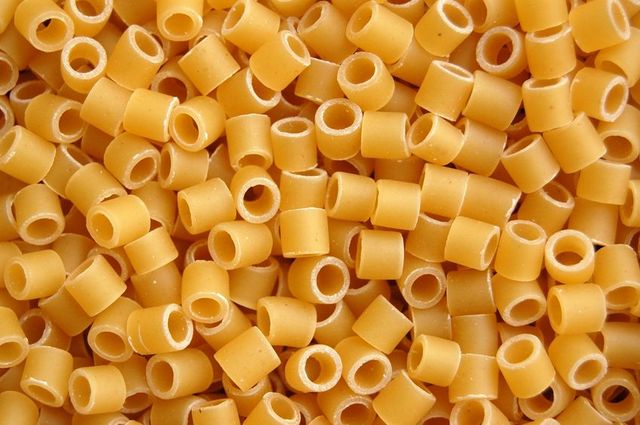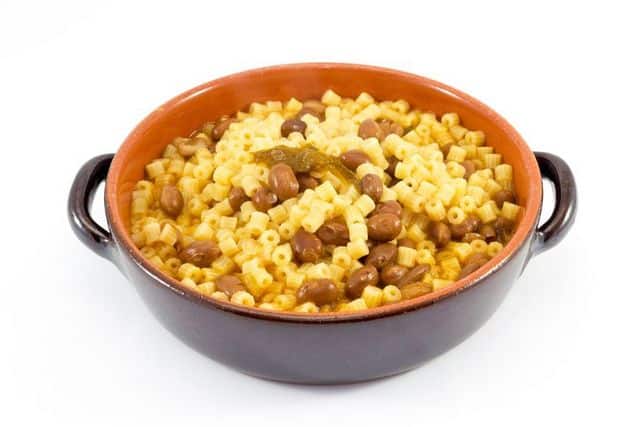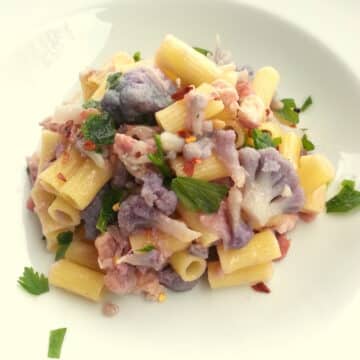Ditalini and family!

I wanted to make a particular pasta dish from Calabria with ditaloni pasta as per the recipe I was going to follow. So off I went to the supermarket, searched along the pasta aisle (Italian supermarkets have long pasta aisles, sometimes two!) found a packet of ditaloni and proudly brought it home! My Sicilian hubby took one look and told me the pasta I had bought wasn’t ditaloni, but ditali, despite what it said on the packet!
The world of Italian pasta can be very confusing, not only because there are so many pasta shapes but also because for most pasta shapes there isn’t really an official standard for pasta makers to follow. What there is are commonly accepted measurements and shapes for particular pastas with a bit of overlapping, name borrowing and a ‘va bene cosi’ (it’s okay like that!) attitude when it comes to homemade pasta!
Italian pasta names usually end with masculine plural suffixes, -ini, -elli, -illi, -etti or the feminine plurals -ine, -elle etc., all of which mean "little"; or with -oni, -one, which mean ‘big’. Other suffixes such as -otti ‘biggish’ and -acci ‘rough’ or ‘badly made’ can also be found. ‘Ditale’ in Italian means ‘thimble’. So, the ‘ditale’ pasta group contains 3 sizes of short pasta tubes; ditaloni, ditali, ditalini; big thimbles, little thimbles, and very little thimbles!

Small, smaller, the smallest!
Ditalini are pretty small and mostly used in soups. Ditaloni and ditali are bigger and work well in creamier soups, in salads, pasta bakes, and with a number of pasta sauces including tomato, meat, and seafood sauces. All three sizes can be found in two versions, grooved ‘rigate’ or smooth ‘’lisci’. Grooved pasta is usually served with heavier sauces and smooth pasta in soups or with lighter sauces.

These ‘ditale’ pasta shapes are normally sold and used as dry pasta and originated in Southern Italy, particularly Campania. But they are used in many traditional dishes, especially soups in Calabria and Sicily as well. I used them in a wonderful recipe from Calabria with purple cauliflower. They are also quite popular here in the North and are often used in the very delicious, traditional pasta with bean soup.
A little ditalini history!
As a footnote I also came across a bit of historical information about ditalini. Apparently once upon a time (they’ve been around for ages) they were also called ‘Garibaldini’ after Italy’s famous son, but luckily that name didn’t stick. After all, ‘Garibaldoni’, Garbaldini and ‘Garibadali’ all sound like a bit of a tongue twister! Don't you think?






Ben Salario says
My Sicilian grandpa died a few years, and we kept forgetting to ask which pasta he preferred to use. Now I learned that its Ditali that my grandpa loved to make. We could only find Ditaloni for the longest time, but I finally found a site that got them. I already tried all the dishes my grandpa used to make, now I'm trying new ones which is how I ended up here.
Today I made 'nduja sauce with ditali. TBH that cauliflower recipe sounds nice, but I can't find purple cauliflower in the Netherlands. And if I do get cauliflower its either in the freezer or I'll boil and fry it into a pancake with breadcrumbs.
Cas says
Thank you for explaining why there's such a difference between pastas of the same name from different brands. I've made a lot of different pasta dishes for many years and so have a definite preference for the exact pasta that I feel works best in my recipes. The lack of uniformity in size and thickness has produced some disappointing results. Never really had any issues, but it has become something of a problem this past year or so. Some are way too thick or small. The one's I like come in boxes, but I no longer buy boxes after finding roaches in them - twice. Not easy to find a bag pasta of what I'm looking for.
Dale says
I just wish you had a side-by-side comparison of the three for relative sizing. Otherwise, thanks for a very interesting and informative article. Now I know the ditali won't replace the ditalini that I'm struggling to find in the US.
Jacqui says
Thanks for your comment Dale. I will do my best to add a photo with the 3 sizes as soon as I can to help you differentiate. As I wrote above, it's not so easy to find them all where I live and pasta makers often use the names interchangeably.